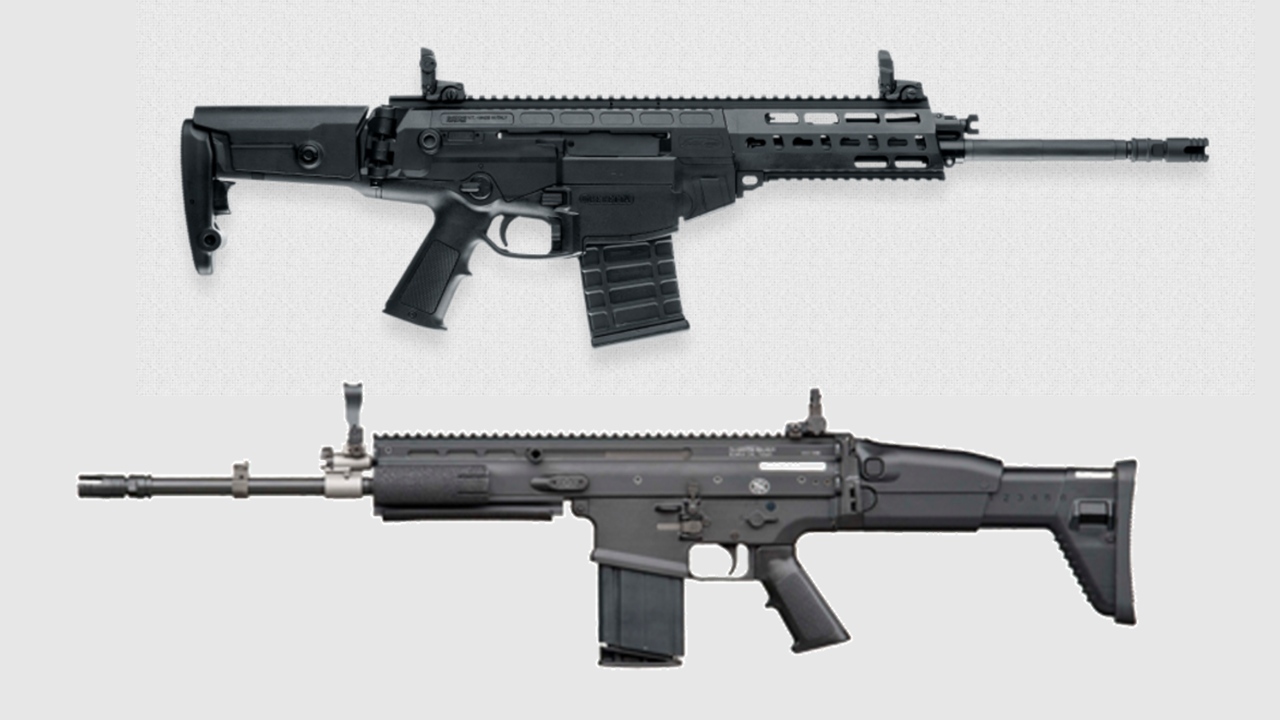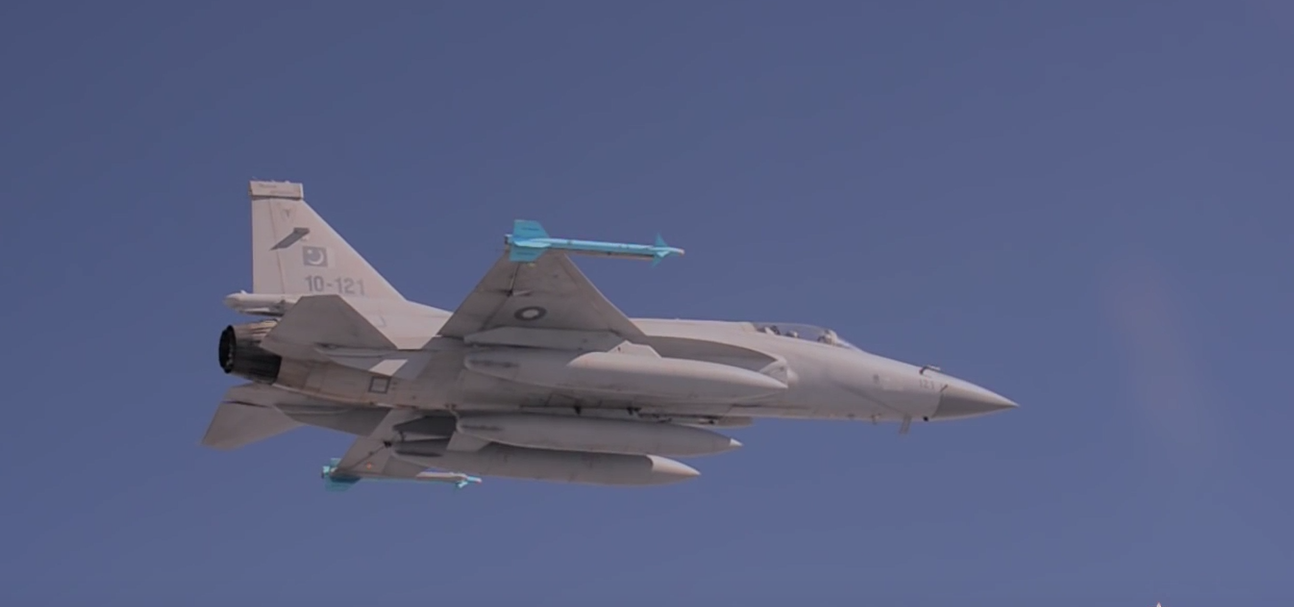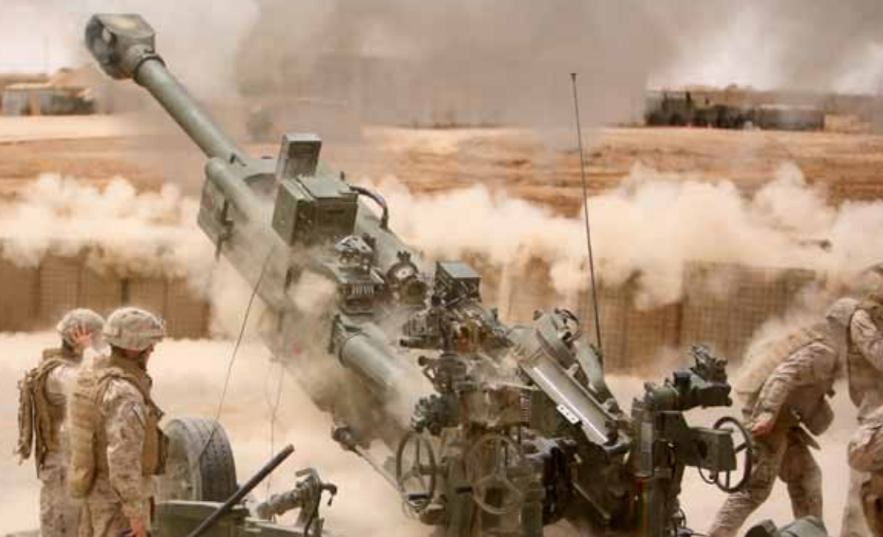2522Views 9Comments

IDEAS 2016: Pakistan’s next-generation assault/battle rifle program(s)
In its coverage of the 2016 International Defence Exhibition and Seminar (IDEAS) currently taking place in Karachi, Samaa TV reports that the FN Herstal SCAR-H and Beretta ARX-200 were shortlisted as candidates for replacing the Pakistan Army’s Heckler & Koch G-3 battle rifles.
Notes & Comments:
The Pakistan Army revealed that it was searching for a new rifle in March. The FN SCAR-H, Beretta ARX-200, Česká Zbrojovka CZ-806 BREN 2, Zastava M21, and Kalashnikov AK-103 were being evaluated. The mix of 7.62x51mm (SCAR-H, M21, ARX-200) and 7.62x39mm (AK-103, BREN 2) options indicated that the Army was seeking a replacement for both the G-3 and Type 56, a Chinese-built version of the AK-47.
The Army has yet to publicly confirm its shortlist of candidates (or if it has selected the finalists at all). The winning design will be manufactured under license by Pakistan Ordnance Factories (POF). In May, the Chairman of POF, revealed that a successor to the HK G-3 was being sought. The new rifle will fulfill the operational needs of the Army and, in parallel, be placed in POF’s future product catalogue.
Two rifle calibers were originally under consideration (covering the G-3 and Type 56). It is not clear if the BREN 2 or AK-103 are still being considered for the 7.62x39mm requirement, especially since the ARX and SCAR platforms can be chambered for 7.62x39mm. Pakistan has the option to maintain one core rifle design to fulfill multiple calibre requirements, which could accrue savings in terms of cost and logistics.
Multiple layers of cost savings could favourably position POF as a key supplier for the selected vendor. While Pakistan is expected to push for commercial offsets, which could provide POF with activity outside of orders from the Pakistan Army, the new rifle is also expected to elevate POF’s commercial viability, and in turn, enable it to strengthen its spot in current markets and secure new ones.
Properly manufacturing a new design will require Pakistan to invest in upgrading POF and potentially other entities (e.g. composite materials), and that is in addition to the costs associated with licensing the winner. Scaling this overhead across the majority – if not entirety – of domestic armed forces and even civil (e.g. law-enforcement) needs will likely be the core priority, not just for managing cost in terms of domestic procurement, but also enhancing commercial competitiveness (for export).



9 Comments
by Matthys Jacobs
Strange that the H&K 416 and 417 are not being considered having just been selected by France as their official rifle.
Whilst the FN SCAR has a 7.62x39mm variant H&K 416 were looking for a partner to develop the 7.62x39mm variant which would work quite well.
by Sami Shahid
FN Herstal SCAR-H and Beretta ARX-200 have been used in Afghanistan by NATO forces and are battle proven rifles. Both are suitable for Pakistan.
by Salman Shahid
I think it might have something to do with weather condition, since it’s harsh in Pakistan. It can go from extremely cold to extremely hot. So they wanted a rifle that can be used in all weather condition. This is just a hunch though.
by Matthys Jacobs
I think the US recently tested all the Rifles mentioned in pakistan’s short list and the FN Scar came out second, the HK416 has the least stoppages and was tested in several environments.
by Tazeem
Scar cannot be chambered for 7.62×39. Do not mistaken CZ BREN 805 for Scar please
by Bilal Khan
The FN SCAR has been marketed as a modular design, 7.62×39 has been reported for a while.
https://www.google.ca/amp/www.thetruthaboutguns.com/2015/10/foghorn/fn-unveils-7-62×39-conversion-kit-for-scar-17/amp/?client=ms-android-google
by Bilal Khan
HK didn’t submit a proposal. Some were told by the company that it now focuses on NATO markets only.
by Matthys Jacobs
One of the Nordic countries recently selected the HK-416.
I think it could be down to German export laws. Germany has made it known it won’t export to certain countries.
I’ll try to scratch for more information.
Having fired all the rifles on offer, the HK-416 is far more reliable and ergonomical.
It’s also the most expensive option.
by Mazhar J
A friend of mine served at Siachin for a year, he told me that G3 gets jammed at that height, only AK56 works in that cold and harsh environment. AK103 is not selected due some political issues, Russia did not respond positively in some other weapons negotiations otherwise it is a very reliable gun.